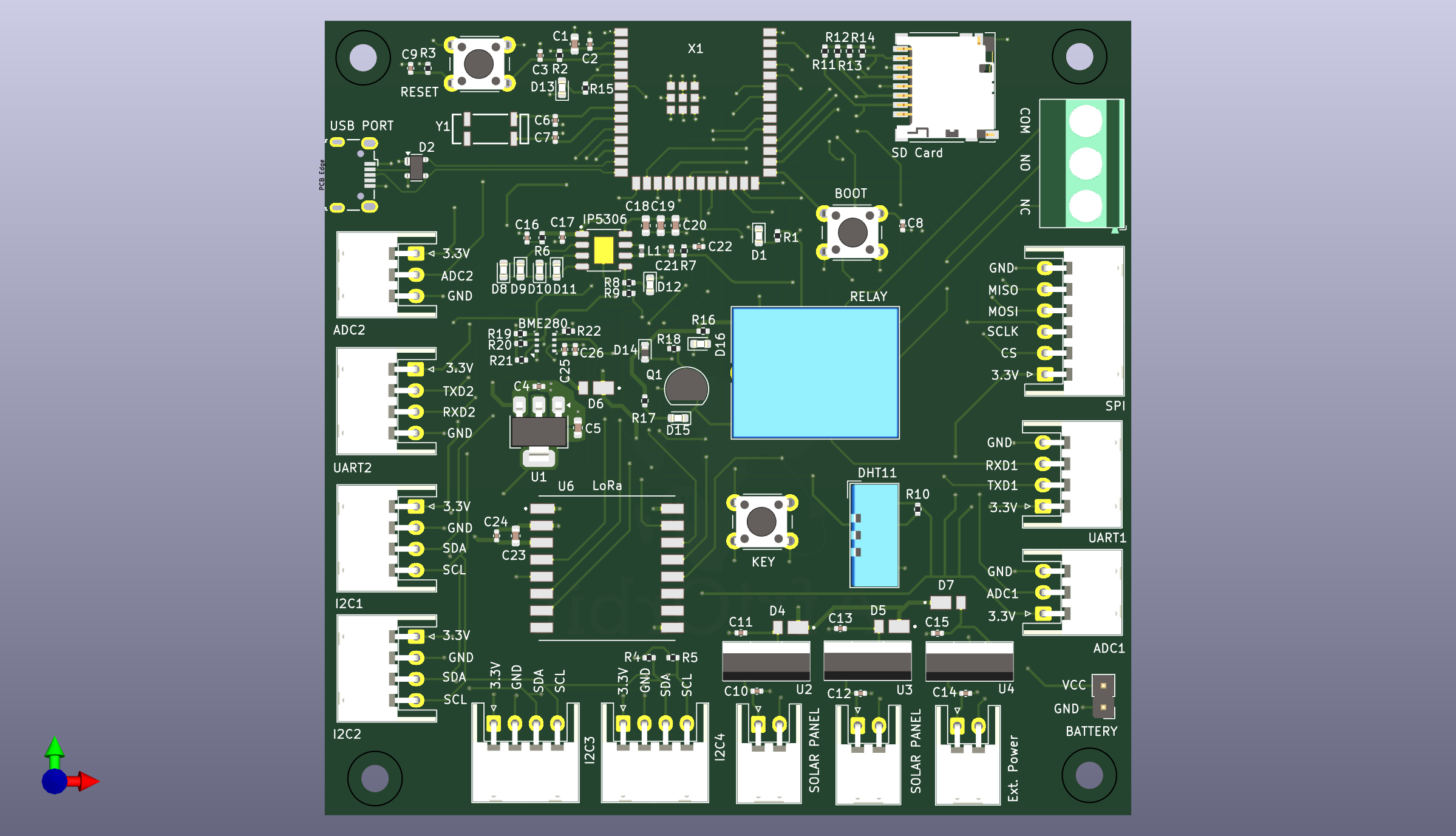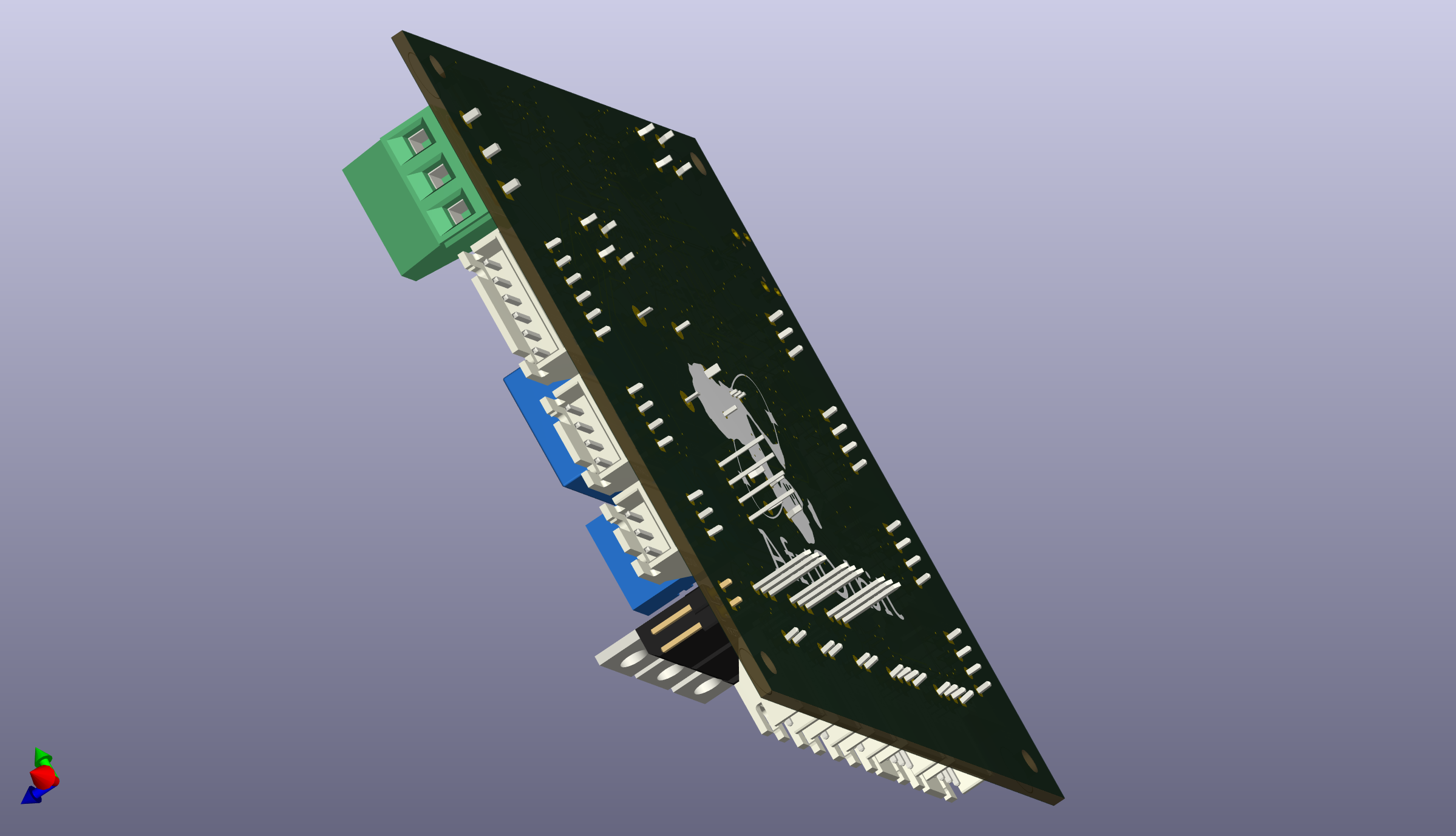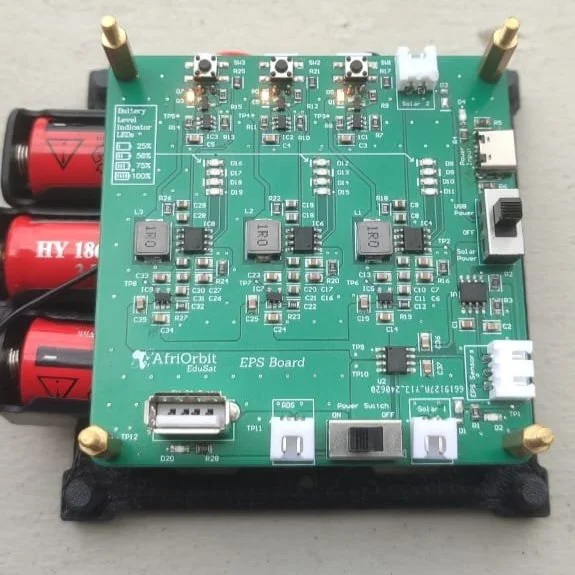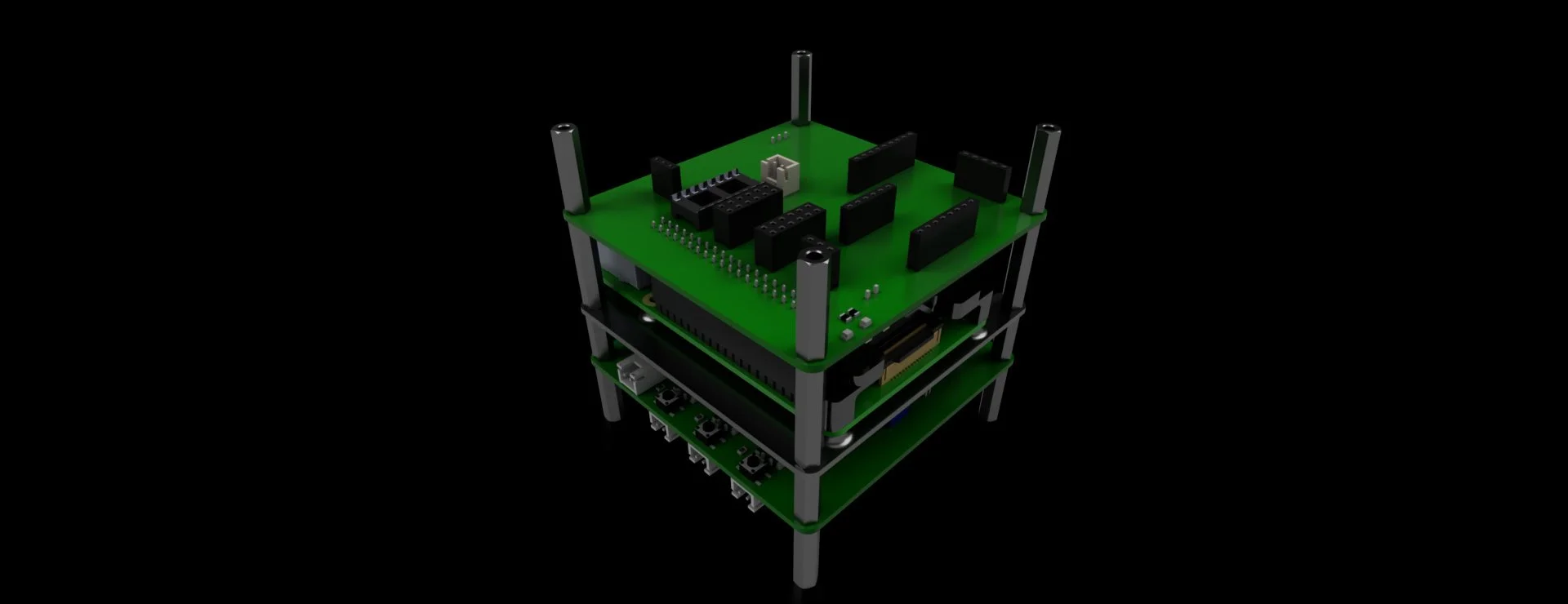Edusat consists of OBC, EPS, SDR and Sensor Board.
The power board distributes and controls power to all other subsystems within the kit from deployable solar panels mounted on the structure and a rechargeable battery unit with 3.7V x 12,600mAh (4200mAhx3) battery pack designed for long life. The design of the EPS takes into account that its application may fall within remote areas and is designed for power efficiency and sustainability.
The EPS is a three-pronged subsystem involving the Power Conditioning and Distribution Unit (PCDU), batteries, and the solar array. The PCDU carries the bulk of the power management needed for the proper functioning of the satellite. Electrical Interfaces
60A Battery connection point with charge regulator.
Up to 12 solar array strings at 120W maximum each.
All outputs are protected by Latching Current Limiters (LCLs) or Refrigerable LCLs (RLCLs). In the expanded configuration, the primary power distribution modules include 8 class-10 LCL outputs, 56 class-3 LCL outputs, and 8 class-3 RLCL outputs.
Two secondary power distribution modules, each with 6 LCLs (up to class-2) for 5V, 6 LCLs (up to class-2) for 12V, and two 30W low-voltage outputs.
At the heart of our system, is the powerful ESP32-based OBC which provides incredible performance and functionality to our system from its high processor speed, multimedia performance, memory and connectivity and has proven space heritage. It provides computational processing and control to all other subsystems and still hosts the curriculum and code playground. The fanless, energy-efficient Raspberry Pi runs silently and uses far less power than other computers.
The software-defined radio is a multiband system covering a UHF and VHF used in satellite communication for their extensive coverage and great performance in space-related communication. Antennas used are high gain deployable with a small footprint for effective signal transmission, reception and mass budget consideration. Software Defined Radio (SDR) Payload: The SDR payload, a versatile and flexible component, is central to the IoT communication module.
The Software-defined radio is an important module in communication as it allows for the flexibility and adaptability of our systems' transmission and reception needs. It also provides the capacity to update the system without needing to change the hardware, making it an advantageous component in our design. Our SDR is a multi-frequency range in uplink and downlink bandwidths, suitable for NB-IoT.
The kit has a variety of sensors that simulate typical nano-satellite payloads and familiarize them to learners. These sensors include a magnetometer, UV sensors and a camera. The learner can interact with these sensors in the playground and learn various data processing techniques of the information gathered. It consists of dynamic sensor board with a wide array of sensors attached including GPS, barometric sensors, accelerometers, gyroscopes, UV sensors and many more. They work in tandem to simulates an ADCS subsystem that provides pointing accuracy and stability to the payloads and antennas critical in mission success.
The structural subsystem has a form factor of a modular 1-U cubesat and beyond. The designs are done and 3-D printed in-house









